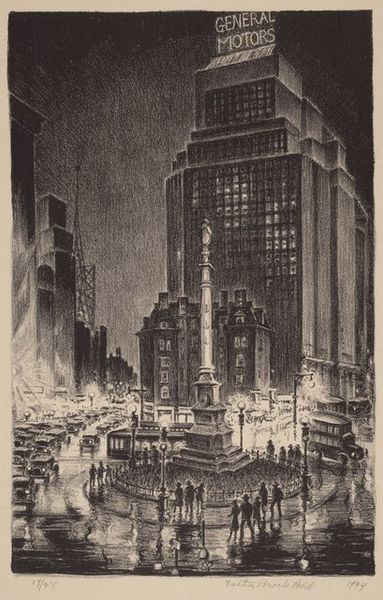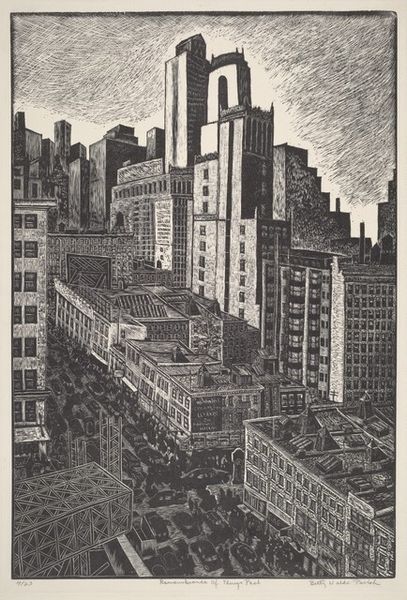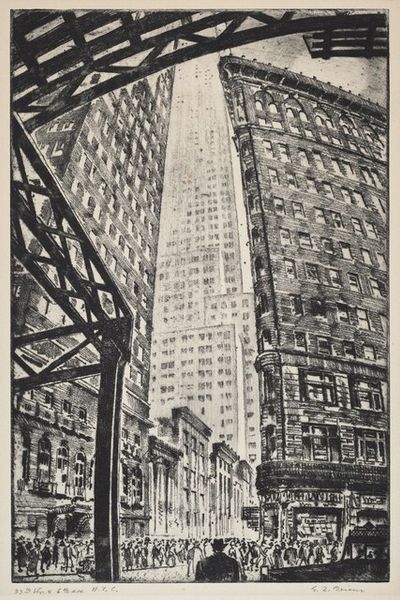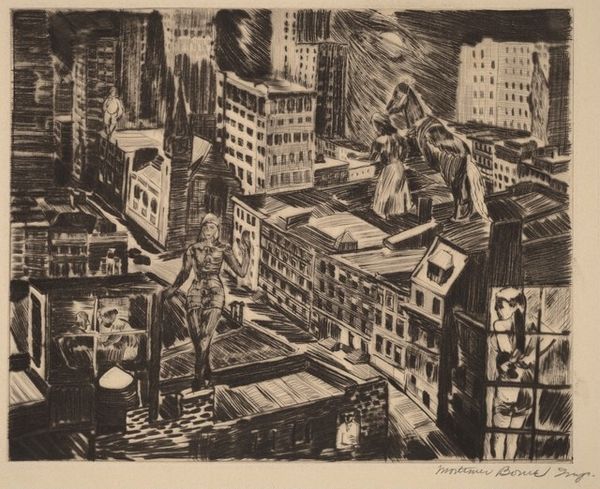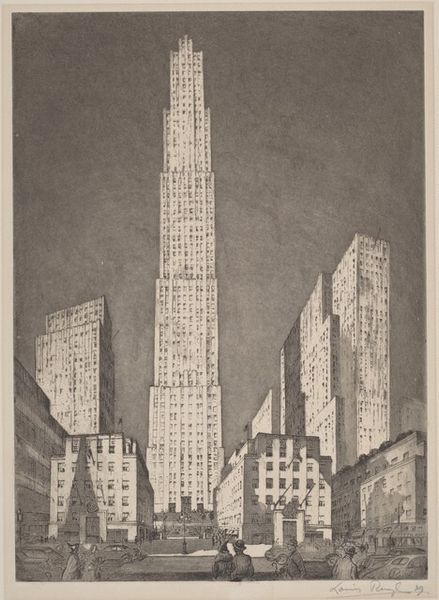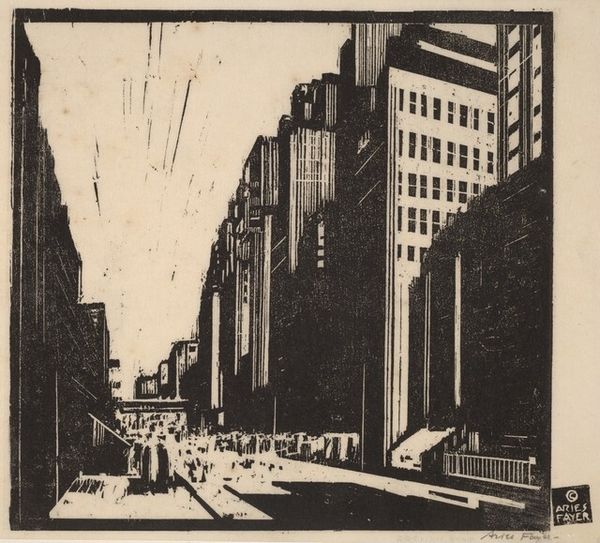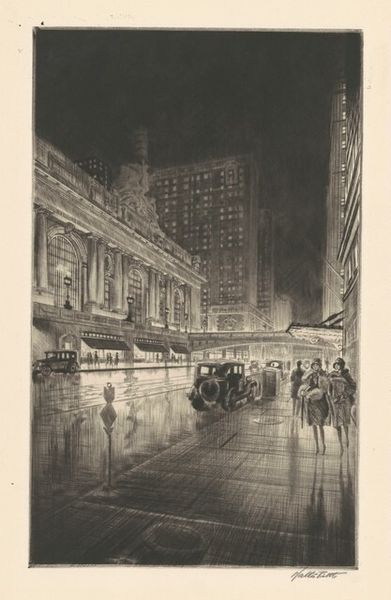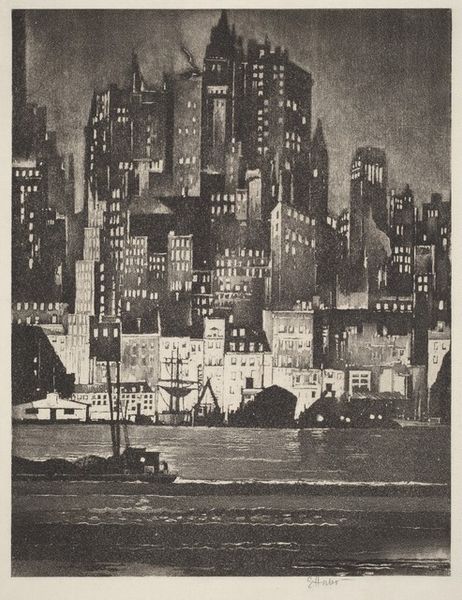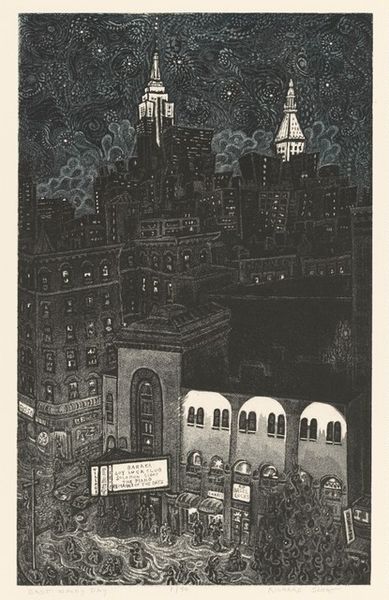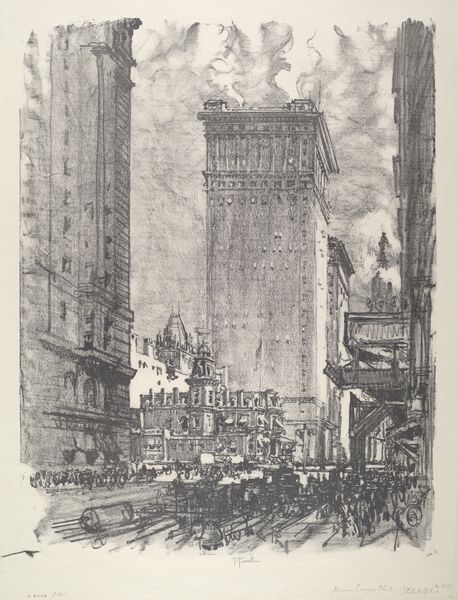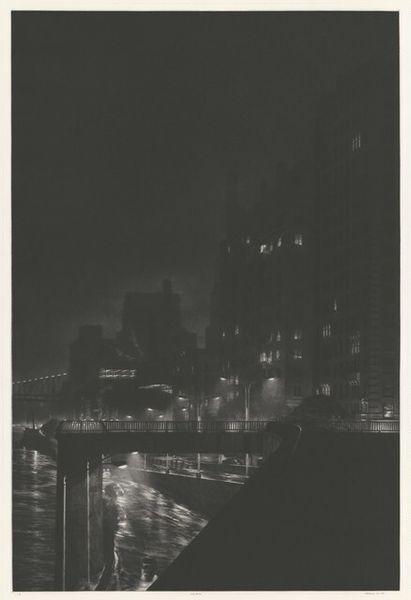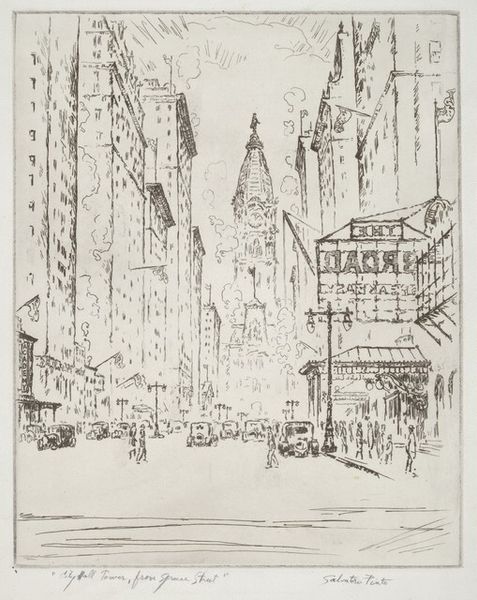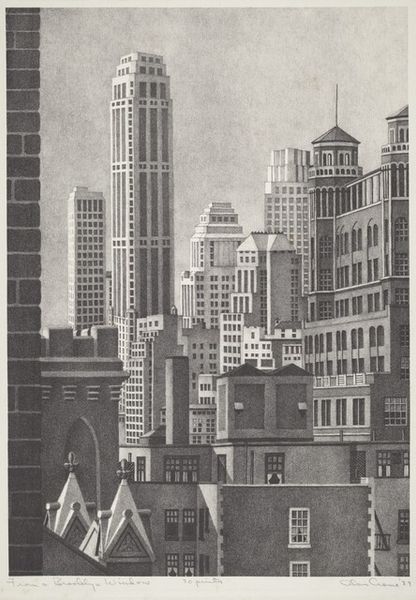
graphic-art, lithograph, print
#
art-deco
#
graphic-art
#
lithograph
# print
#
old engraving style
#
cityscape
#
monochrome
Dimensions: plate: 355 x 252 mm sheet; 469 x 343 mm
Copyright: National Gallery of Art: CC0 1.0
Curator: Looking at this artwork, “The White Way” by Anton Schutz, completed in 1930, what’s your initial take? The artist worked in the medium of lithography to produce this piece. Editor: It's got this stark, almost dramatic quality. The monochrome palette and the reflection in what looks like wet pavement, create an intense mood of a rainy big city nightlife. Curator: Right, it encapsulates the essence of the era! "The White Way," referring to the bright lights of Broadway. This print is an exercise in using graphic art techniques to create this effect of immense, artificial illumination, a defining image of early 20th-century urbanism. Editor: And the materials tell that story. A lithograph, readily produced and distributed—perfect for showcasing and promoting the spectacle of this modern urban center. I'm curious how its accessibility may have broadened the appeal and reinforced those glamorous representations of the period. Curator: Absolutely. Consider the social function: Schutz, and other artists, were crafting visual narratives around urban identity, selling images of modernity that helped construct both the reality and the mythology of cities like New York. How these were circulated helped normalize that reality and mythology. Editor: It's also a fascinating window into the commercialization of leisure, isn’t it? “Paul Revere Orchestra," blazoned across the storefront, the theaters – they’re selling an experience, a night out under these glittering lights. The means to mass entertain have been realized! Curator: Indeed, and what about the labor implied in that creation? Think about the lithographers, the printers, all those behind the scenes involved in mass-producing such imagery for popular consumption. How that effort fueled economies both in the art world, and well beyond, into consumer markets. Editor: I agree. It's easy to get lost in the lights, but understanding the production puts into context the significance this work might have held for those living, working, and playing around it. Curator: It seems almost as though this image reflects not just the city's light but also the collective hopes and aspirations of the time, now solidified on the stone of this very lithograph. Editor: Exactly! It prompts one to think critically about what elements really shine when contextualizing a cultural snapshot of this caliber.
Comments
No comments
Be the first to comment and join the conversation on the ultimate creative platform.
